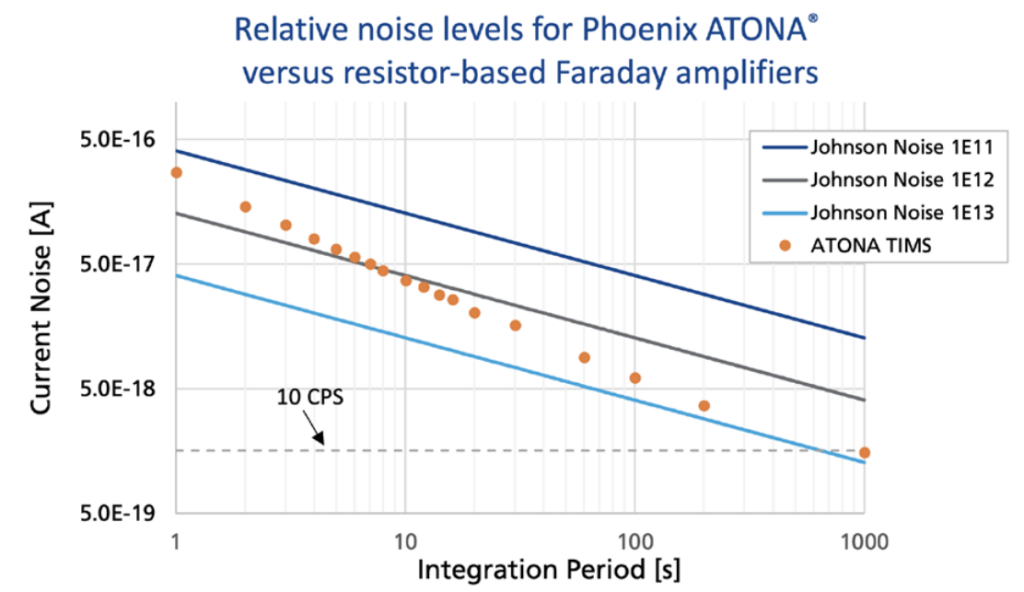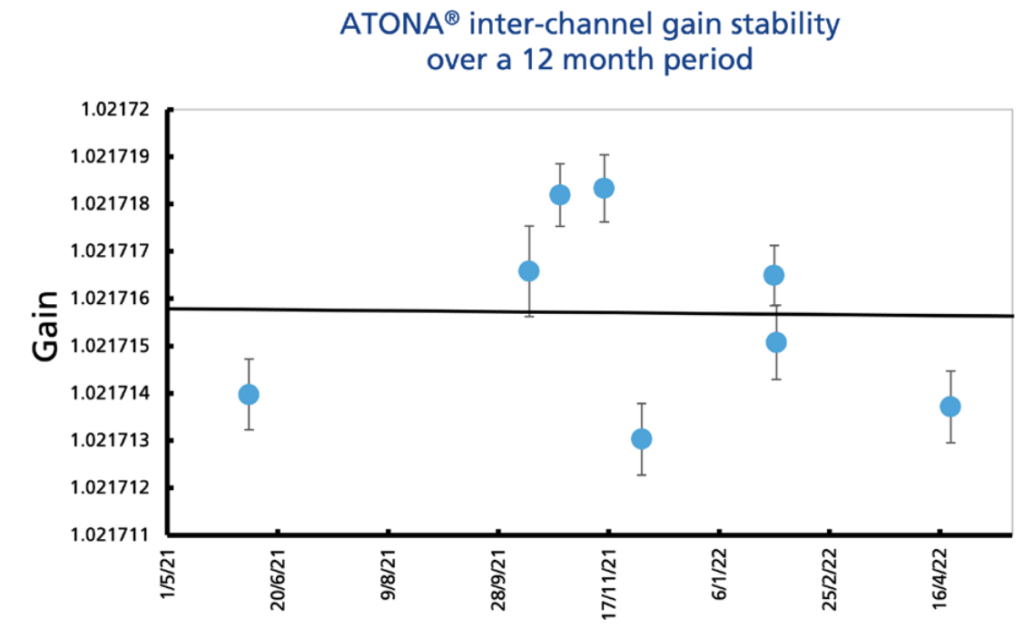What if you had Faraday amplifiers that gave you the low noise level of 1e13 Ω amplifiers, yet you could also put huge ion beams on them – without consequence? What if these amplifiers had almost zero resistor lag or Tau decay time? What if these amplifiers were so stable that gain calibrations could almost be a thing of the past?
And what if they had such stable, low noise baselines that they could be used for sub-millivolt ion beams? It sounds like having your cake and eating it! You might be surprised to know that this technology does exist, and it’s called ATONA®.

Noise
ATONA® works differently to resistor-based amplifiers. The noise performance improves with integration times, and with a typical 10 second integration time, the ATONA® outperforms a 1e12 Ω resistor-based amplifier. In fact, for NGX and SIRIX it outperforms even a 1e13 Ω resistor-based amplifier. And that’s across the whole dynamic range too.

Dynamic Range
Higher resistance amplifier systems are hugely compromised, particularly in terms of dynamic range. But ATONA® is different, it can be used for ion beam sizes from tens of cps up to 200V or more. It’s linear across the whole range too. So if you have high and low abundance isotopes, or unknown / variable sample sizes, ATONA® is the perfect solution.

Amplifier Decay
The time for an amplifier to return to baseline following measurement is a major problem for high resistance systems (1e12 and 1e13 Ω amplifiers). It reduces on-peak measurement time, lowering analytical precision and making peak jumping difficult. With ATONA®, amplifier decay time is <0.2 seconds, requiring no artificial correction. Amplifier decay is simply not a limiting factor using ATONA®
In addition to He analysis, either detector may also be used to collect all noble gas isotopes of interest by employing a ‘peak jumping’ method without altering the accelerating voltage. Additional Faraday and/or ion counting detectors can also be configured, so there is no compromise in flexibility with NGX Helium Plus.

Baseline and Gain Stability
ATONA® long term stability is better than 10cps 1SD using 1,000 second integrations. This means an extremely low quantitation limit, with less requirement to use an ion counting system. And inter-channel gain is also exceptional. The data on the left shows stability of 4ppm over a year, with no detectable drift in the gain during this time.

Download Brochure
Download the complete ATONA overview brochure: ATONA overview brochure